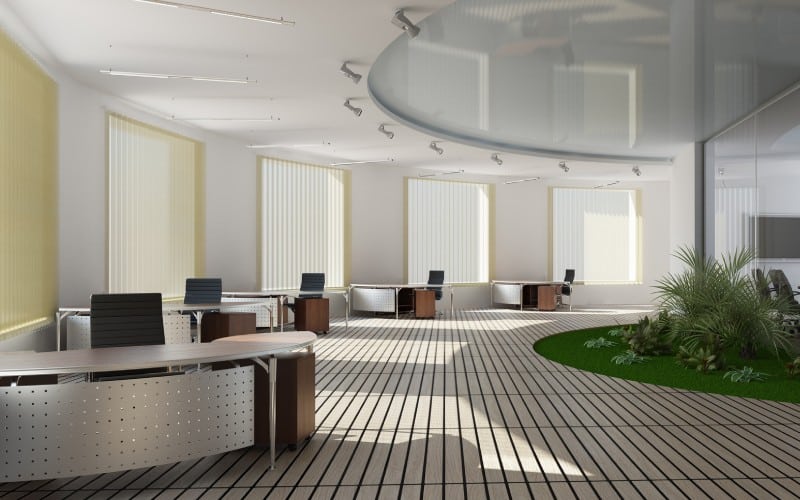500 Hood Road, Suite 320Markham ONL3R 9Z3

The buildings we work and live in play a crucial role in our daily lives. They shelter us from the outside elements and make us more comfortable, but they also affect our health. As knowledge of health-related factors increases, awareness of how buildings can impact occupant health also increases.
One key aspect that significantly influences the health of building occupants is the design and construction of building envelopes and roofing systems. A well-designed building envelope and efficient roofing system along with proper ventilation can contribute to a healthier indoor environment and overall well-being for those residing or working within. Good waterproofing, insulation, and other elements of the building envelope all contribute to a safer and healthier environment.
One of the primary functions of a building envelope is to regulate indoor temperature, creating a comfortable living or working environment. An optimal building envelope, equipped with high-quality insulation materials, can effectively control heat transfer between the interior and exterior. This results in improved thermal comfort, maintaining indoor temperatures within a desirable range throughout the year. Furthermore, roofing systems that incorporate reflective materials can mitigate heat absorption, reducing the heat island effect in urban areas as well as creating a more comfortable environment.
The insulation benefit becomes particularly significant in scenarios where external heating sources, such as central heating systems or electricity, are unavailable or compromised, such as during power outages or extreme cold weather events.
Adequate thermal comfort is vital for occupant health, as extremes in temperature lead to discomfort. Excessive heat can lead to heat stress and other heat-related illnesses or respiratory problems, while cold temperatures can lead to hypothermia, which can occur in temperatures as high as 10oC and other cold-related conditions.
By minimizing the impact of high temperatures, these roofing solutions contribute to a more comfortable living environment and help prevent heat-related health issues.
The quality of indoor air is a critical factor influencing occupant health. Poor indoor air quality can lead to respiratory problems, allergies, and other health issues. Optimal building envelopes play a significant role in preventing the infiltration of outdoor pollutants, such as dust, pollen, and pollutants from vehicle emissions. High-quality windows and doors, along with proper sealing of gaps and cracks, contribute to airtightness, reducing the entry of external pollutants.

Additionally, roofing systems can impact indoor air quality by preventing water leakage and mould growth. A well-designed roofing system with proper drainage mechanisms helps to avoid water infiltration, which can lead to the development of mould and mildew. Mould spores, when present in indoor air, can trigger respiratory problems and allergic reactions. Maintaining a watertight roofing system helps to protect a building’s occupants’ health against potential hazards from indoor air contamination.
As the frequency and intensity of extreme weather events increase, resilient building envelopes and roofing systems become essential for occupant safety and well-being. Climate-resilient designs can protect occupants from the adverse effects of extreme temperatures, storms, and other natural disasters. Well-constructed roofs that can withstand heavy rainfall, strong winds, and other weather extremes help ensure the safety and health of occupants.
Mental health is important. Access to natural light has been linked to various health benefits, including improved mood, increased productivity, and better sleep patterns. Optimal building envelopes incorporate features, such as large windows, skylights, and light-reflective surfaces to maximize natural light penetration into interior spaces. This not only reduces the dependence on artificial lighting but also contributes to a healthier and more pleasant indoor environment.

In addition to natural light, providing occupants with views of the outdoors has been associated with positive health outcomes. Access to green spaces and natural scenery can reduce stress, enhance cognitive function, and contribute to overall well-being. Many hospitals and healthcare institutions have started to incorporate building designs to maximize natural light and views to take advantage of this effect. Through carefully designed building envelopes that consider the placement of windows and openings, occupants can enjoy the psychological and physiological benefits of connecting with the external environment.
Good natural lighting can also help prevent eye strain and headaches if glare is avoided.
Prioritizing energy-efficient building envelopes and roofing systems not only benefits the environment but also contributes to improved occupant health. These buildings consume less energy, reducing greenhouse gas emissions and air pollution for better outdoor air quality and community health. Additionally, energy-efficient structures typically feature advanced ventilation with a steady supply of fresh air. This removes indoor pollutants for optimal indoor air quality, creating a healthier environment for occupants.
Advancements in knowledge about both health and optimal building design, plus improvements in building technologies and practices have made it possible for building owners to take significant, proactive steps to protect occupants. Integrating innovative technologies and sustainable design practices is critical for enhancing their overall quality of life.
ABSI offers building envelope and roofing engineering consulting services, helping building owners have optimal building envelope systems to protect the health of their occupants. From design planning to ongoing inspections and maintenance planning, we ensure you have the tools you need to make informed decisions.

Naji Hassan, a renowned professional in Building Science and Engineering, brings a wealth of knowledge and experience to his field. Educated at Beirut Arab University and Harvard Business School Online, Hassan has honed his expertise in structural and municipal engineering, building science, and business management. As the President of Accent Building Sciences and an experienced Senior Project Manager, he has made significant strides in building envelope engineering, building condition assessments, and energy retrofit programs. His commitment to innovation and excellence is evident in his approach to large-scale project management and his active participation in industry organizations. Hassan is not only a leader in his field but also a prolific writer and thought leader. He regularly shares his insights and experiences through articles on LinkedIn, which can be found at LinkedIn Articles. Additionally, he maintains a blog where he delves deeper into various aspects of building science, accessible at Accent Building Sciences Blog. Outside of his professional pursuits, Hassan enjoys travel, golf, languages, gardening, and music, reflecting his diverse interests and well-rounded character. Naji Hassan's journey in building science and engineering is not just a career but a testament to his lifelong dedication to learning, teaching, and inspiring others in his field.

500 Hood Road, Suite 320Markham ONL3R 9Z3